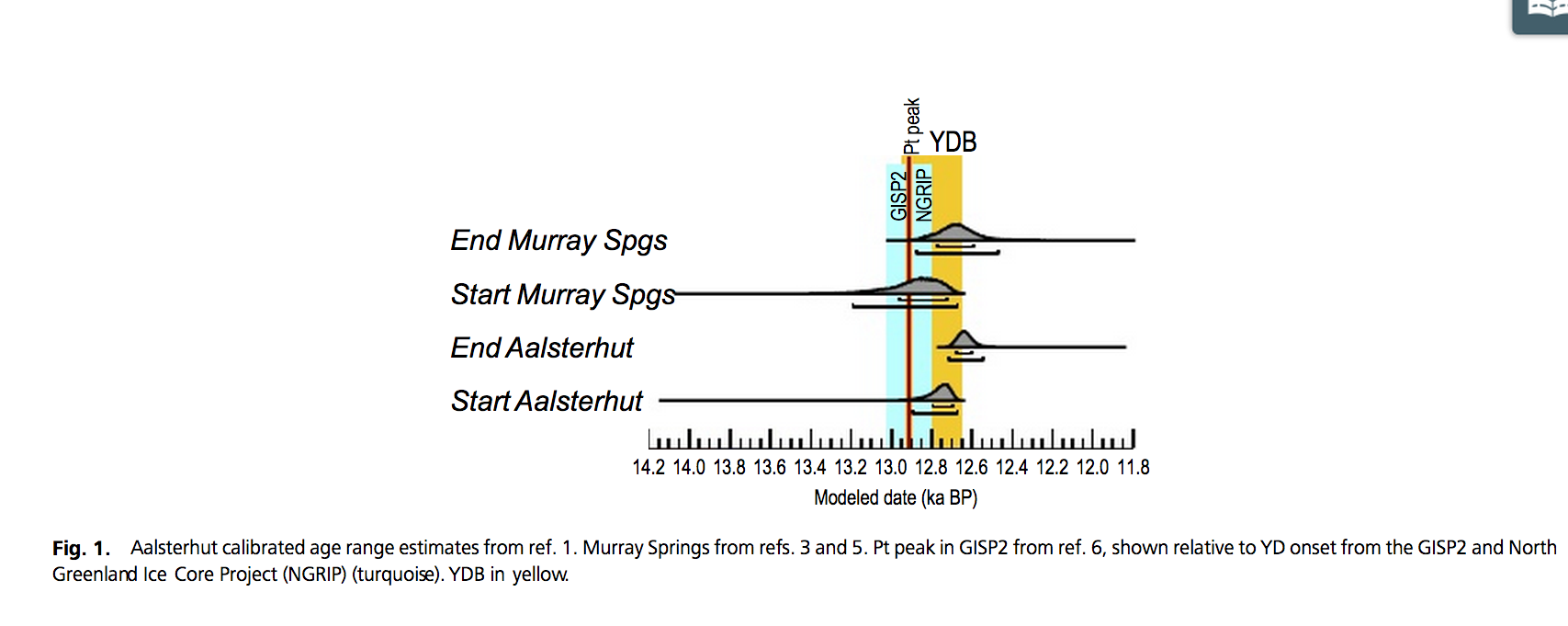Cosmic impact or natural fires at the Allerød–Younger Dryas boundary: A matter of dating and calibration
Wittke et al. (1) present evidence of a major cosmic impact at the onset of the Younger Dryas (YD) episode, including some markers found in the top of the well-known Usselo marker horizon (UH). This finding is contrary to our extensive radiocarbon dating effort from this horizon (2), which shows that the UH at Aalsterhut postdates the onset of the YD. Furthermore, Wittke et al. (1) misinterpret the origin of the UH: this horizon is a well-defined paleosoil that formed during the Allerød and the early YD in the top part of coversand. This coversand was deposited before the Allerød, during cold and dry conditions, and is part of the European Sandbelt. Wildfires were common and occurred throughout this period, rather than synchronously with the onset of the YD (3).
Wittke et al. (1) cite our paper on the UH at the Aalsterhut site (2) and state that we neglected to address calibration issues when interpreting our radiocarbon dates. This comment is simply not true. Moreover, the statement that we used a value of 12,900 ± 30 cal y B.P. for the onset of the YD is incorrect: this age is not in our report. We report an age range of 11,000–10,900 14C yr B.P. (2). Using the older, discontinued IntCal04 calibration, this radiocarbon age range gives a calibrated age for the onset of the YD of 12,900 ± 30 cal y B.P.. Wittke et al. (1) compare some of our radiocarbon dates from the UH, calibrated using the presently recommended IntCal09 curve (4), to a value for the onset of the YD calibrated using a different (unspecified) calibration curve, thus creating a problem with calibration issues. Had Wittke et al. used the current IntCal09 calibration curve for the YD dating, which yields 12,815 ± 90 cal y B.P., there would not be a calibration issue.
Calibration increases the uncertainty of the timing of the YD because of a long-lasting “plateau” in the calibration curve for this time period (4). This aspect is why we directly compared the radiocarbon ages, showing that the charcoal in the UH at Aalsterhut is somewhat younger than the Allerød–YD boundary (2). When using the calibrated ages, as Wittke et al. (1) did, it can indeed be argued that our data are consistent with the Allerød–YD boundary. However, this does not indicate that our site is consistent with the diamond-rich layer reported by Kennett et al. (5), as suggested by Wittke et al. (1). The UH, and associated wildfire, at Aalsterhut (10,870 ± 15 14C yr B.P. or 12,785–12,650 cal y B.P.; n = 12) is clearly younger than the Black Mat where Kennett et al. (5) found nanodiamonds (11,070 ± 10 14C yr B.P. or 13,080–12,915 cal y B.P.; n = 7).
Accurate dating is imperative for establishing causal relationships between deposits and events and, to compare calibrated radiocarbon dates, these must be obtained using the same calibration curve. It is thus essential to report both the original radiocarbon ages and the calibration curve used.



